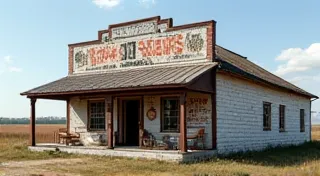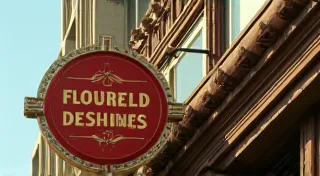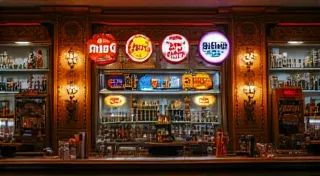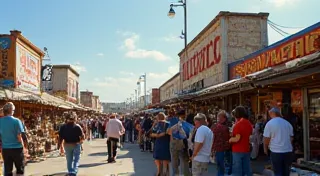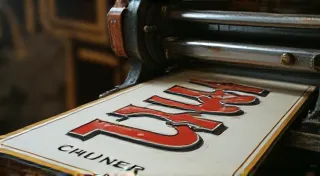The Cartographer's Palette: Mapping the Geography of Lost Advertising Landscapes
Imagine, for a moment, not a map charting coastlines and rivers, but one charting a different kind of territory: the landscape of vintage advertising signs. Forget longitude and latitude; we’re charting prevalence, scarcity, and the echoes of marketing campaigns long faded from memory. This isn't about where things are now, but where they were, and why. The placement of a single sign – a brightly colored beacon of consumerism – wasn’t random. It was a carefully calculated act of dominion, a bold declaration of commercial intent rooted deeply in the particular soil of a place.
My own fascination began with a simple discovery, tucked away in the dusty back corner of my grandfather’s barn. It was a porcelain sign, depicting a cheerful farmer brandishing a bottle of “Old Homestead Cream.” The colors were faded, the edges chipped, but the image retained a compelling sense of nostalgia. Grandpa, a taciturn man of few words, simply shrugged when I asked about it. “They put ‘em everywhere,” he said, gesturing vaguely towards the surrounding countryside. It was that seemingly offhand comment that sparked the realization: these weren't just random objects; they were remnants of a deeply layered commercial geography.
The Rise of Regional Brands and the Power of Local Connection
Think about it. Before the ubiquity of national brands, regional companies thrived. The availability of raw materials, the demographics of the population, and localized marketing strategies all conspired to create a patchwork of commercial identities across the country. The “Old Homestead Cream” sign in my grandfather's barn wasn’t a nationwide phenomenon. It represented a dairy farm that flourished in that specific rural region, servicing a local customer base. These weren’t manufactured stories; they were authentic connections between producer and consumer, amplified through these brightly colored pronouncements.
Consider the prevalence of "King-O-Cola" signs in the Midwest, or the scarcity of similar branding in the East Coast. These aren't arbitrary differences. They’re testaments to the limitations of transportation, the loyalty of local populations, and the aggressive marketing tactics of regional powerhouses. The sheer logistics of distributing a national brand in the early 20th century were staggering. It was far more cost-effective, and often more impactful, to cultivate a strong local presence. These signs served as constant reminders of that regional allegiance. The craftsmanship involved in creating these signs was remarkable. Many employed techniques that are now considered lost arts, significantly influencing advertising design – a topic explored further in articles on the influence of Art Deco on advertising sign design.
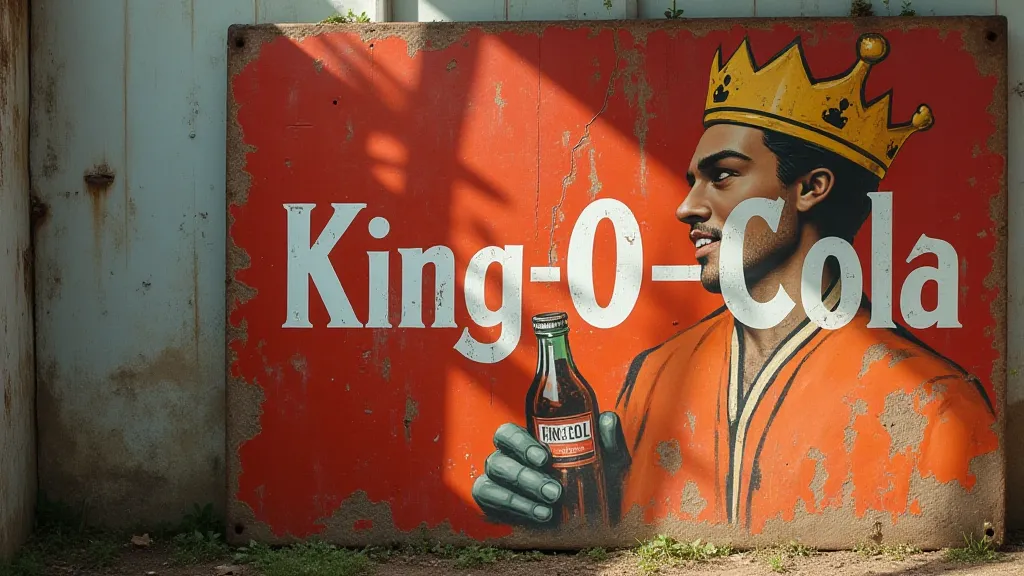
The Art of the Sign: Craftsmanship and Enduring Appeal
Beyond their geographical significance, these signs are remarkable artifacts of American craftsmanship. Many were hand-painted, requiring immense skill and attention to detail. The vibrancy of the colors, the precision of the lettering, the enduring quality of the materials – these are testaments to a time when quality was prized above all else. The techniques used varied. Porcelain enamel signs, known for their durability, were baked at incredibly high temperatures, resulting in a glossy, almost glass-like finish. Tin litho signs, lighter and more affordable, were created through a complex process of stamping and printing. Often, specific materials, like cast metal, were crucial for achieving this durability; you can find more details on these durable forms of advertising and their construction.
Restoration of these signs is a delicate art. Aggressive cleaning can damage the original paint and patina, diminishing their value and historical integrity. Many collectors prefer to preserve the "character" of the sign – the chips, the fading, the rust – as these imperfections tell a story of their own. It’s about respecting the sign’s history, not erasing it. The stories these signs tell are often linked to specific eras and establishments, some of which focused on sweet treats served at soda fountains; for a deeper look at the imagery and branding of those bygone eras, check out articles on advertising sweet treats at soda fountains.
The Decline of Regional Identity and the Rise of National Brands
The mid-20th century witnessed a dramatic shift in the American commercial landscape. Improved transportation networks, mass production techniques, and the rise of powerful national advertising campaigns began to erode the dominance of regional brands. As national companies could afford to blanket the country with their messages, the need for localized marketing diminished. Smaller, regional producers struggled to compete, and many were absorbed by larger corporations.
The signs themselves became casualties of this transformation. As regional brands faded from view, their signs were often discarded, repurposed, or simply lost to the elements. Many ended up in junkyards, farm auctions, and antique shops, waiting to be rediscovered by a new generation of collectors.
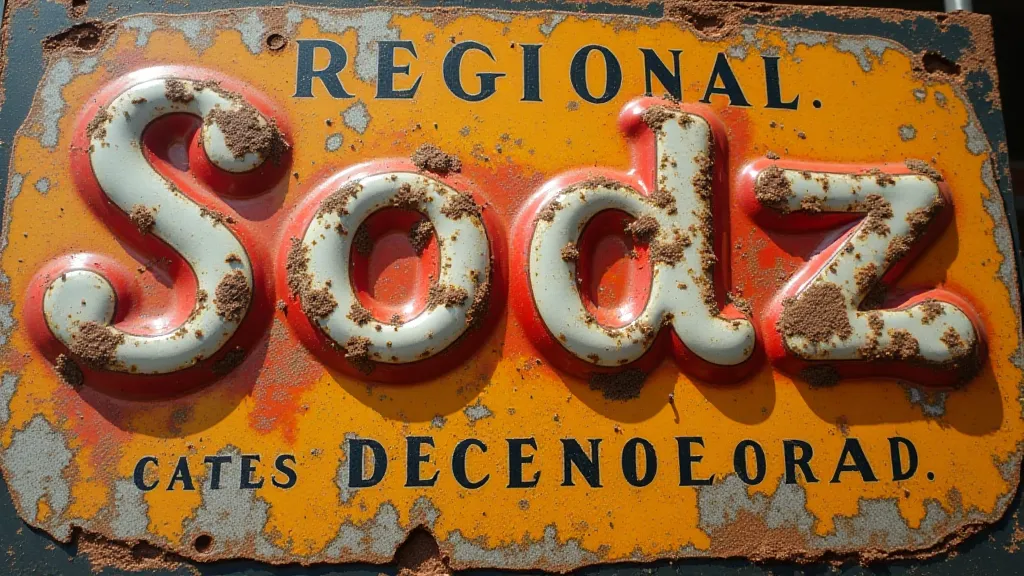
Mapping Scarcity: Understanding the Value of Location
The scarcity of a particular sign is directly tied to its geographical history. A sign for a brand that thrived exclusively in a small corner of the country is naturally rarer than one that enjoyed national distribution. Collectors prize these rare finds, recognizing their significance as tangible links to a bygone era.
It’s not just about the brand itself, but also the location where the sign was found. A “Prairie King” sign discovered in Illinois holds a different kind of value than one found in Florida. It’s a validation of its original placement, a confirmation of its historical narrative. The act of finding these signs, uncovering clues about their past locations, is becoming a kind of modern-day cartography, recreating the lost commercial landscape. Determining authenticity and origins often requires a keen eye and knowledge of regional branding practices.
The Evolution of Sign Design and Regional Variations
The designs themselves reflect the era and regional influences. The vibrant colors and bold typography of the 1930s gave way to the more streamlined designs of the 1950s. Signs in the rural Midwest often featured pastoral imagery, while those in urban areas were more industrial and modern. The materials used also varied depending on the region and the target audience. Porcelain enamel signs were popular in areas with a strong dairy industry, while tin litho signs were more common in urban centers.
The process of researching and identifying these signs can be incredibly rewarding. It’s like piecing together a puzzle, uncovering clues about the past and gaining a deeper understanding of American culture. This search for authenticity can lead collectors to explore historical records, interview long-time residents, and even visit the locations where the signs were originally displayed.
Collecting and Preserving: A Labor of Love
For many collectors, the pursuit of vintage advertising signs is more than just a hobby; it's a passion. It's a way to connect with the past, to preserve a piece of American history, and to share their passion with others. The process of finding, restoring, and displaying these signs can be incredibly rewarding. But it also requires patience, dedication, and a deep appreciation for the craftsmanship and artistry of a bygone era.
The value of a vintage advertising sign depends on a variety of factors, including its rarity, condition, and historical significance. Signs for well-known brands in excellent condition can fetch thousands of dollars, while less common signs in poor condition may sell for a fraction of that amount. However, for many collectors, the monetary value is secondary to the historical and cultural significance of the sign.
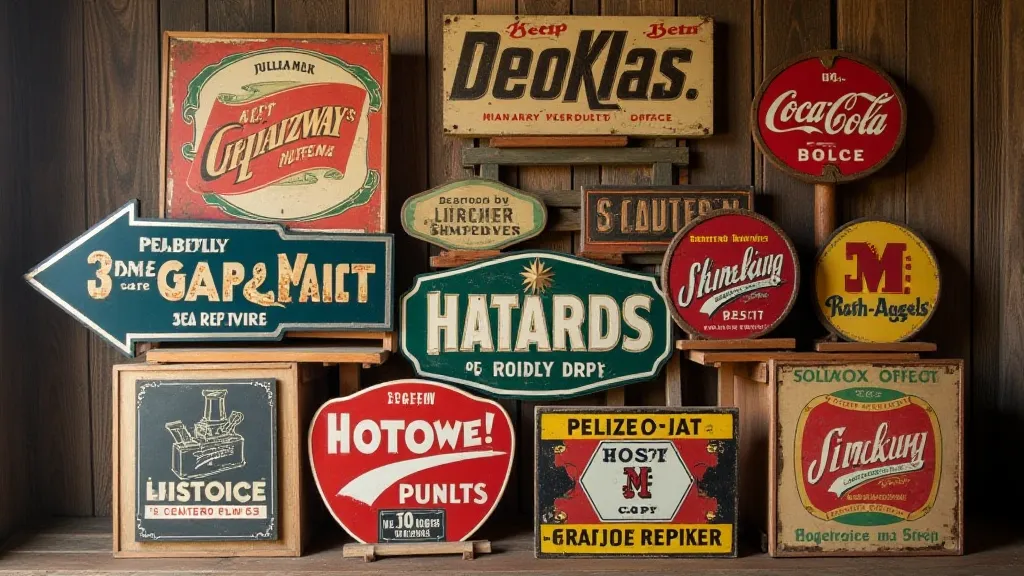
The Future of Vintage Advertising Sign Cartography
As technology advances and new tools become available, the field of vintage advertising sign cartography is poised to enter a new era. Online databases, mapping applications, and digital archives are making it easier than ever to research and document these lost landscapes. The rise of social media and online forums is also connecting collectors from around the world, fostering a sense of community and collaboration.
The challenge moving forward will be to ensure that these digital resources are accurate, comprehensive, and accessible to all. It will also be important to continue to engage with local communities and preserve the physical artifacts that speak to this history, as we examine these durable forms of advertising. The stories these signs tell are often linked to specific eras and establishments; for a look at the rich history of sweet treats and their advertising, explore articles on advertising sweet treats at soda fountains.
